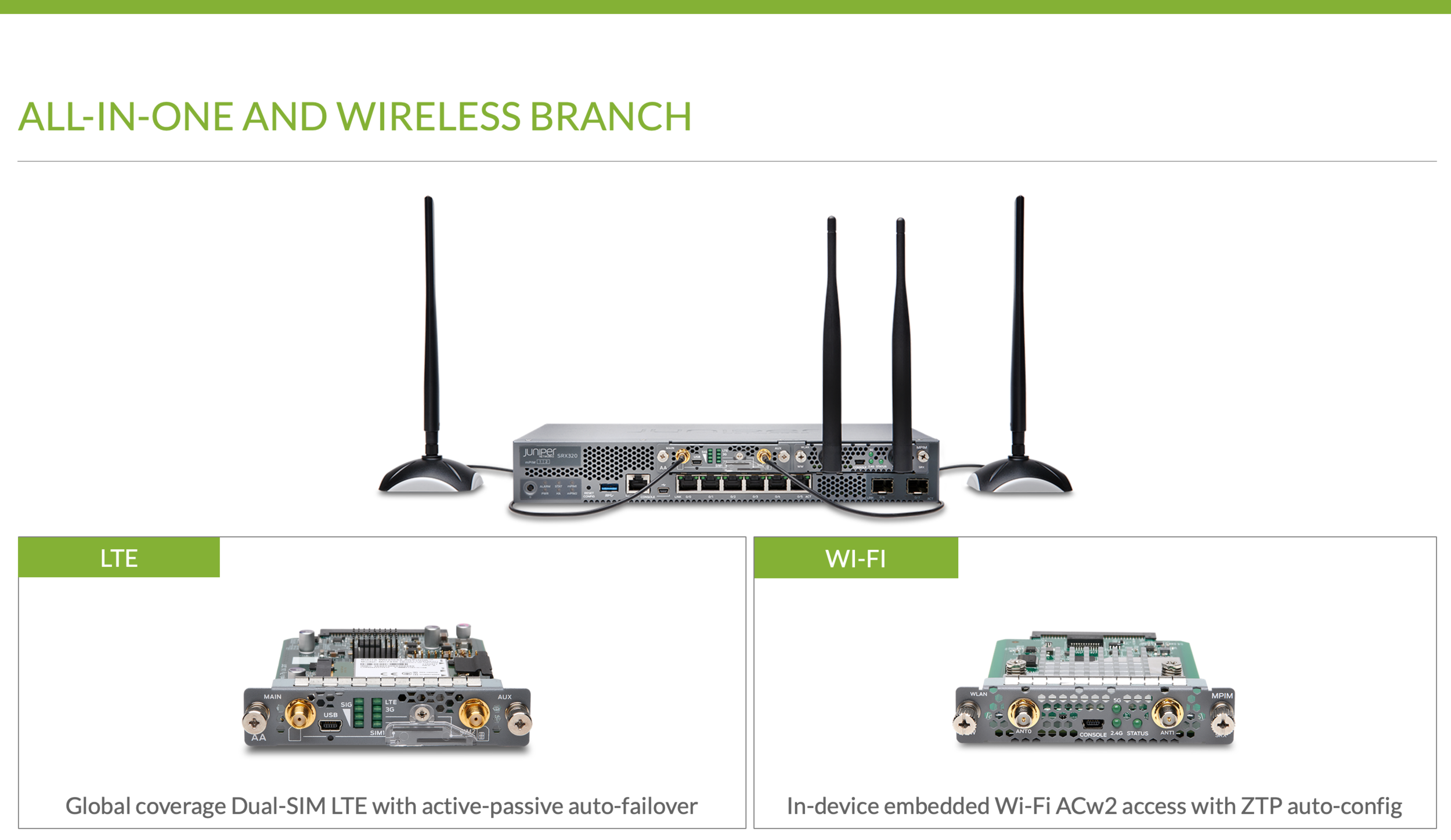The announcement of Juniper's newest hardware additions for the AI-driven enterprise makes our portfolio of CPE the most extensive for secure SD-WAN across all sizes of branch and campuses. There’s no denying the growing importance of SD-WAN for providing secure and efficient connectivity of remote sites to the cloud. Even more important is enterprises’ need to drive operational simplicity and uniformity across the branch and campus in today’s multicloud environment. For SD-WAN to be successful, the key is to satisfy the needs of today while preparing for the ones of tomorrow and beyond.
One of the core needs of increasing importance for SD-WAN is security. Traditional security solutions don’t cut in when it comes to performance, interconnectivity and flexibility, meanwhile, SD-WAN-centric solutions may offer elementary security features that will ultimately put the business at risk. The industry is at an intersection where SD-WAN features and advanced threat protection need to be designed hand-in-hand to safeguard users, applications and infrastructure. This has been our exact focus for our SD-WAN solution and, to that end, we’ve now expanded our range of CPE hardware in the WAN edge portfolio to include:
Wi-Fi Mini Physical Interface Module (mPIM): An enterprise-grade Wi-Fi card for compact locations with our SRX Series Services Gateways. It provides dual radio support of 2.4 and 5Ghz frequencies along with 802.11ac Wave 2 and 802.11ac with backward compatibility of 802.11n standards. The module is suited for remote offices, guest Wi-Fi, small office, IoT connectivity or kiosks. It is an ideal branch-in-a-box solution where one access point is sufficient.
This mPIM is manageable by CLI, JWeb or Juniper Sky Enterprise. It also offers ZTP and management via the Contrail Service Orchestration interface, as part of Juniper’s cloud-managed or on-premises Contrail SD-WAN solution.
SRX380: For larger branches, the SRX380 is the fastest performing CPE platform of the branch SRX300 product line. Leading features include high port density with 10G options for high on-board connectivity, increased POE+ port density for IoT devices, AE256 MACsec encryption, dual power supplies and up to four MPIM card slots for wired or wireless connectivity.
The SRX380 can be adapted to be a secure SD-WAN and next-gen firewall device. Users can add advanced threat prevention services to expand on the native next-generation firewall and UTM capabilities, IPS and AppSecure application visibility and policies.
NFX350: The NFX350 is a high-end universal CPE platform in the NFX Series for large branch site deployments. Built on the next generation of Intel processors, Skylake, it offers up to 7.5 Gbps IPsec performance for higher SD-WAN scale and performance, while redundant power supplies provide greater platform resiliency. It includes 8x1Gbps and 8xSFP/SFP+ ports with AES256 MACsec support for high network connectivity and WAN interfaces for LTE, DSL and SFP. Support for multiple Juniper and third-party VNFs enables customers to accelerate application deployment in an automated and scalable fashion.
The NFX350 universal CPE platform fits the bill as a secure router, SD-WAN device or next-generation firewall. Consistent with the NFX Series, users reap the many benefits of SD-WAN, but most importantly, the simplicity of automation and consolidation with the reliability of smarter security and SDN.
These new products meet the needs of both the top and bottom ends of all branch and campus sizes – the SRX Wi-Fi mini card for compact spaces and the SRX380 and NFX350 as top line branch CPEs. We’re proud of our extensive SD-WAN solution and have plenty more to share about it in our Toolkit Tuesday webinars. Be sure to tune in or test drive Contrail SD-WAN for free.



